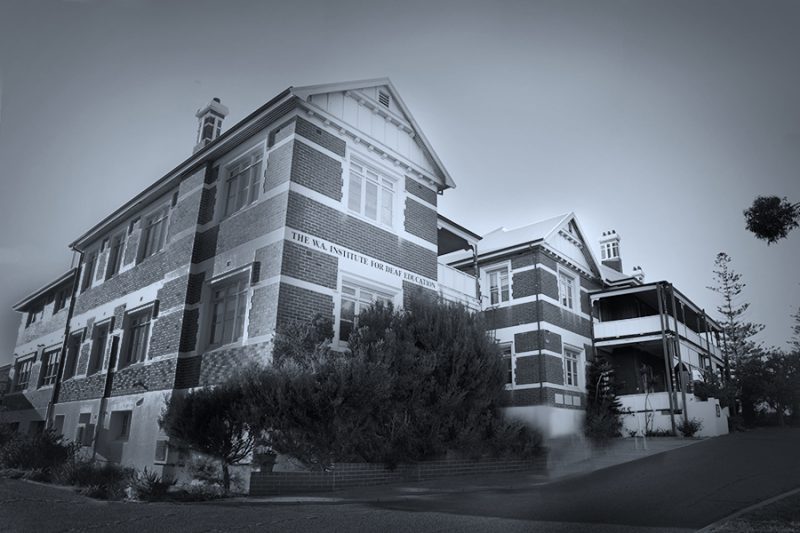This record of the first one hundred years of the Western Australian School for Deaf Children is a story of struggles, of some conflicts, and of many successes and achievements. Above all, it is a record of the continuing struggle to achieve an education system that serves the needs of deaf children and their parents in this State.
 This record of the first one hundred years of the Western Australian School for Deaf Children is a story of struggles, of some conflicts, and of many successes and achievements. Above all, it is a record of the continuing struggle to achieve an education system that serves the needs of deaf children and their parents in this State.
This record of the first one hundred years of the Western Australian School for Deaf Children is a story of struggles, of some conflicts, and of many successes and achievements. Above all, it is a record of the continuing struggle to achieve an education system that serves the needs of deaf children and their parents in this State.
William Thomson arrived from Victoria early in 1896, and he soon met with other deaf people and discovered that there was no school for deaf children in the State. Thomson was a former pupil of the Donaldson’s Hospital in Edinburgh. He had been in Melbourne and Adelaide for some six years before coming west.
 The Pioneers (left to right): William Richard Thomson (Founder and Collector), Ella Connell – (Housekeeper), Eleanor Christina Thomson (Matron and Teacher), Henry Hinds Witchell (Superintendent and Teacher).
The Pioneers (left to right): William Richard Thomson (Founder and Collector), Ella Connell – (Housekeeper), Eleanor Christina Thomson (Matron and Teacher), Henry Hinds Witchell (Superintendent and Teacher).
Something stirred him to urge his sister, Eleanor Thomson, a teacher at the Victorian School for Deaf Children, to come to Perth and teach deaf children here. She responded immediately and, together with a colleague from the same school, Henry Witchell, set off for Perth.
As superintendent, Witchell, and as matron, Miss Thomson, commenced teaching three deaf girls in a private house in Perth in September 1896. They had wasted no time! In 1903, they married, and continued together in the same roles until Henry’s death in 1926.
 |
 |
The Western Australian School for Deaf Children has not always been a Government School, and it may not have survived if it had not been for the efforts of dedicated collectors of donations in the early years of the School – we respect their efforts, and appreciate the generosity of so many responsive citizens who contributed funds to enable the School to continue its service through the stringencies of two long Wars and a protracted Depression in between.





